
Modern - breakthrough or just a transitional period
Modern, or Art Nouveau, is a style in art that served as a transitional phase from eclecticism to the artistic systems of the Modern era. Modern emerged at the turn of the 19th to the 20th century in many countries, where it developed in consideration of national peculiarities. The works of modernists share several common features, including sinuous and flowing lines, ornamentation, and flat imagery. The movement was referred to by various names, but all definitions included the concepts of "new" or "modern." In England, the term Modern Style was used, in Russia, it was called modern, and in France, it was known as Art Nouveau.
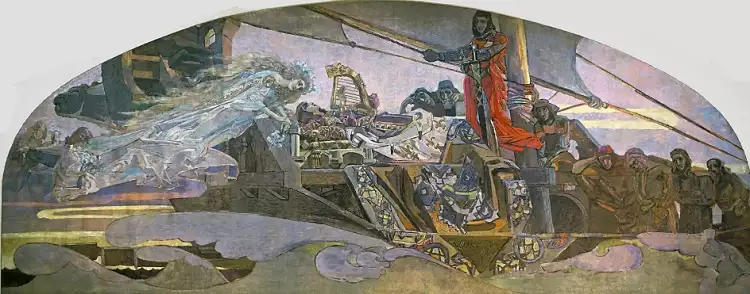 Modern. Mikhail Vrubel. Princess Grioza, 1896
Modern. Mikhail Vrubel. Princess Grioza, 1896
Plots, Themes, and Symbolism of Modern
Modern emerged against the backdrop of rapid technological progress, which unsettled the minds of people at the end of the 19th century. It gave rise to numerous philosophical movements that focused on the ideas of growth, the development of life forces, and unbridled emotions. These themes occupied a prominent place in the work of modernist artists. Whirlwinds, dances, and bacchanals became popular subjects in the painting of various schools.
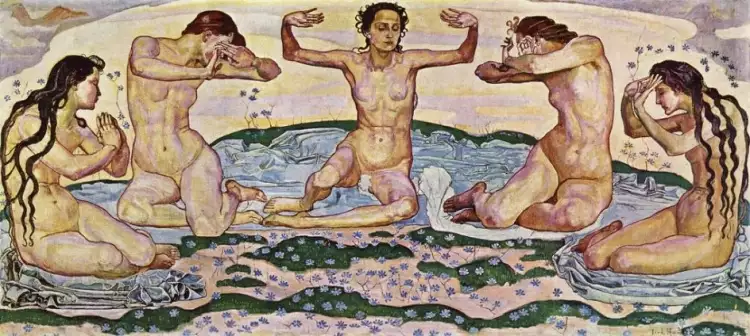 Modern. Ferdinand Hodler. Day, 1898-1900
Modern. Ferdinand Hodler. Day, 1898-1900
Modern was heavily influenced by symbolism, which was reflected in its themes. Painters and graphic artists were primarily interested in characters openly expressing their emotions. Emotionally charged young heroes and passionately beautiful women were common motifs in the work of artists. However, in the realm of romantic longing and ecstatic impulses, traces of vulnerability, brokenness, and powerlessness in the face of elemental forces, characteristic of decadent art, were often evident.
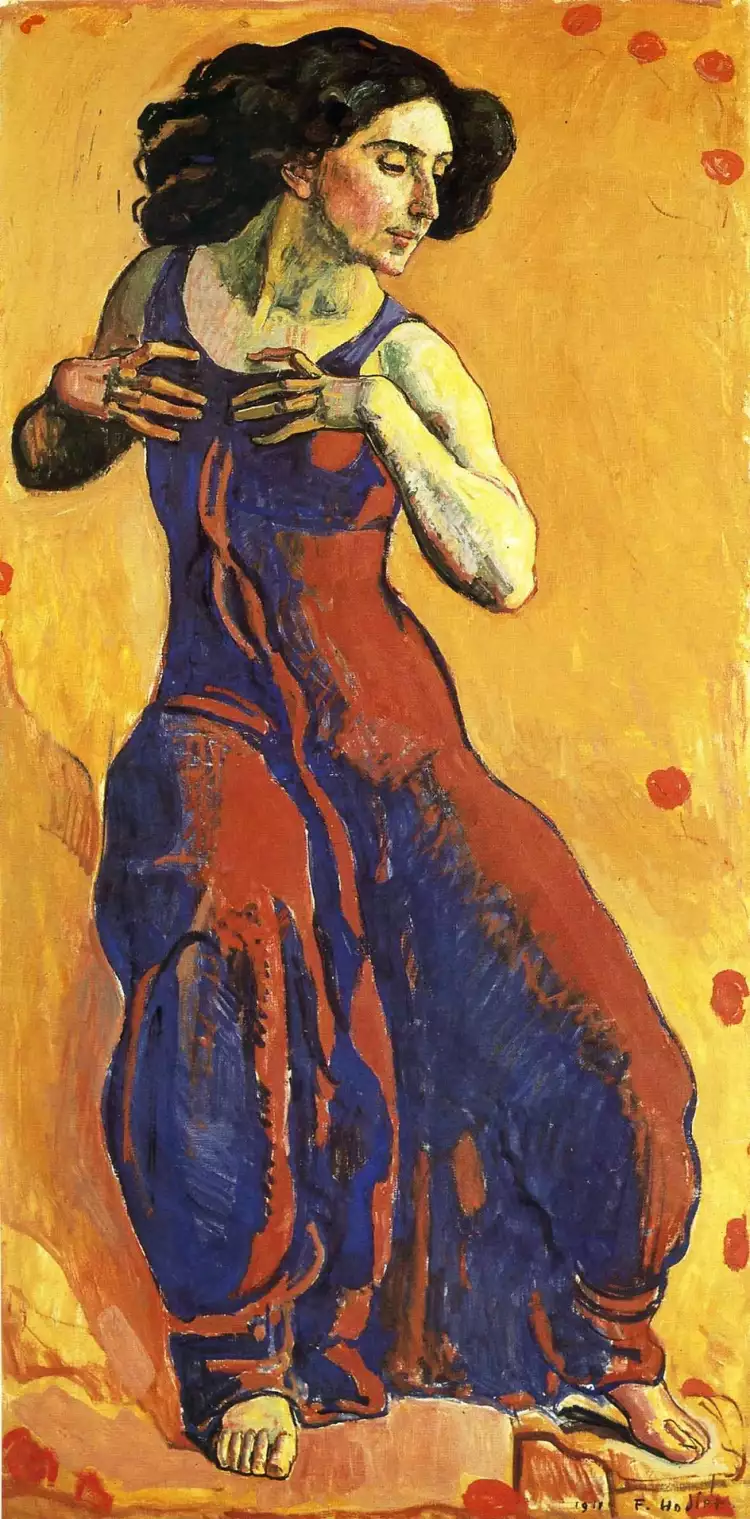 Modern. Ferdinand Hodler. A woman in ecstasy, 1911
Modern. Ferdinand Hodler. A woman in ecstasy, 1911
One distinctive feature of Art Nouveau iconography was the abundance of natural motifs based on the idea of the unity of all living things. However, animals, insects, and plants interested artists only as objects of stylization, and their depictions served merely as elements of ornamentation. The favorite flowers of painters—tulips, orchids, and lilies—carried specific meanings. For example, bellflowers signified desire, sunflowers represented burning passion, and forget-me-nots indicated imminent death.
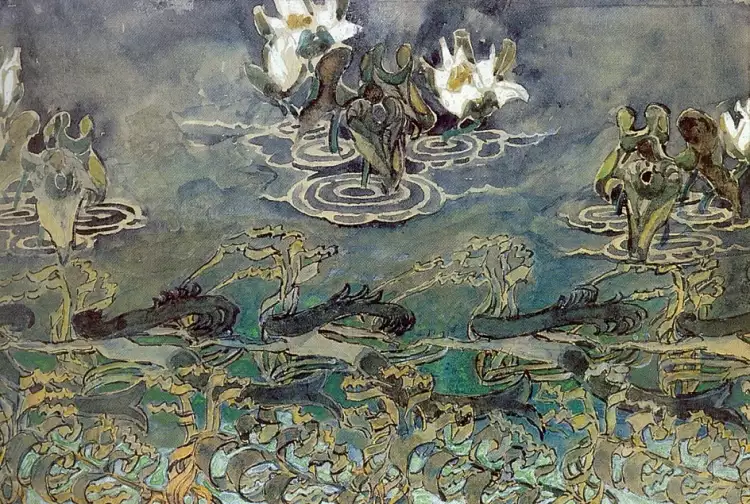 Modern. Mikhail Vrubel. Water lilies, 1890
Modern. Mikhail Vrubel. Water lilies, 1890
Classical genres like still life and landscape were extremely rare in the work of painting masters but did occur. Even in these cases, the depictions of nature were imbued with symbolic meaning. Actions against the backdrop of an island implied an intriguing mystery, a storm spoke of emotional tension, and waves at sea denoted renewal and change. Paintings had little in common with reality and relied on deliberate conventionality.
Characteristic Features of the Modern Style:
- Curved, clear lines, absence of right angles.
- Naturally organic forms.
- Decorative elements integrated into the narrative.
- Flat drawing.
- Pastel color palette with a dominant tone.
- Equivalence of the image and the background.
Stylization served as a means to unite the conventional and the real, to achieve a transformation of reality. The creations of the masters are marked by duality, emphasized ornamentation, and a lack of verisimilitude. As time has shown, such an approach had no future. The new art is often referred to as the "sigh of a dying century," serving as an intermediate phenomenon for the transition of painting to the next stage of development.
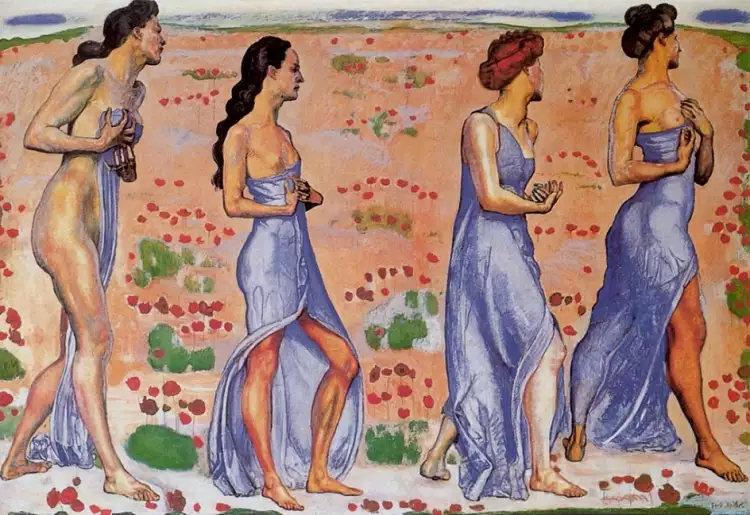 Modern. Ferdinand Hodler. Emotion, 1901-1902
Modern. Ferdinand Hodler. Emotion, 1901-1902
English Modern
The roots of Modern can be traced to Victorian England, where the first calls to return to simple and organic forms of medieval art were heard. The style as an independent phenomenon was finally formed in the work of Arthur Mackmurdo. In his book "Renaissance City Churches," the artist adorned the pages with an elegant ornament of elongated curved elements with clear contours, while stylized images of sunflowers and birds were placed along the edges of the pages. The artistic language created by Mackmurdo became a distinguishing feature of the new direction.
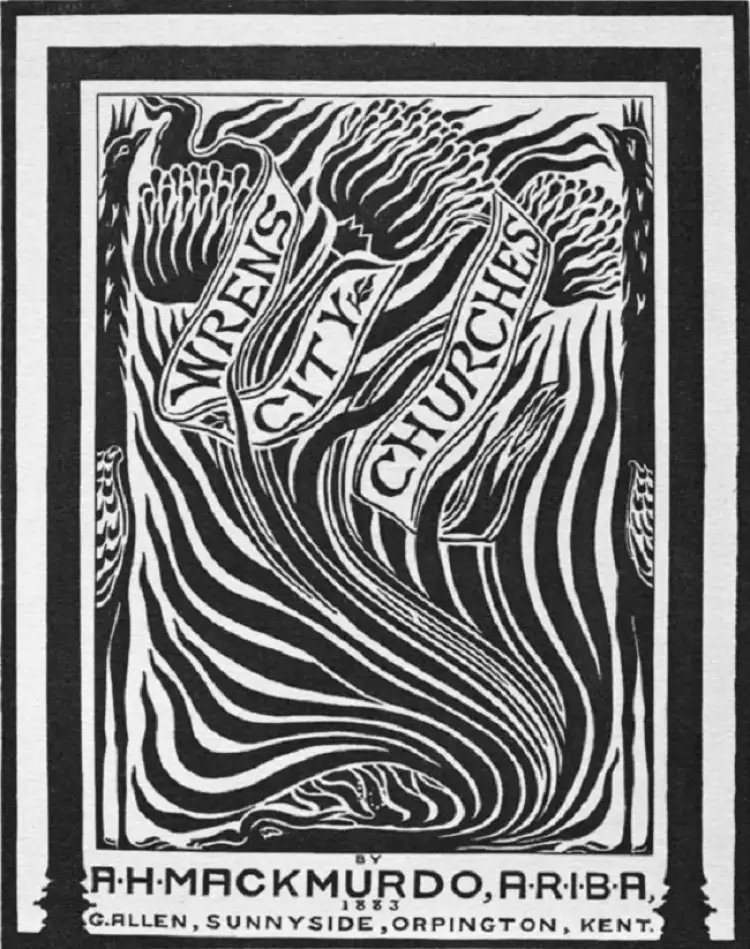 Modern. Arthur Heygate Mackmurdo. Wren's City Churches, 1883
Modern. Arthur Heygate Mackmurdo. Wren's City Churches, 1883
English Modern Style dominated primarily in graphics and decorative arts, spreading to painting much later. Its further development revealed that Great Britain, as the progenitor of Art Nouveau, later stalled and passed the baton to other countries. Only a few notable names were added to the artists of the 1880s generation.
The main role in the late English Modern belongs to the illustrator Aubrey Beardsley. In a short period, the artist made a transition from Pre-Raphaelitism to the new style and created outstanding works full of aestheticism and refined grotesque. His works are characterized by a solid line drawing that sharply distinguishes areas of black and white.
 Modern. Aubrey Beardsley. The Peacock Skirt, 1893
Modern. Aubrey Beardsley. The Peacock Skirt, 1893
Modern in Russia
The style took shape in Russia within the framework of national concepts. Sources of inspiration for Russian modernists included folk art, fairy tales, and folklore. The first representative of Art Nouveau in our country was Mikhail Vrubel, for whom ornamentation was always an organic part of the composition. In the works of other authors, the style was not as pronounced, which was due to the rapid development of Russian art and the strong position of academic painting.
 Modern. Mikhail Vrubel. The Demon Seated, 1890
Modern. Mikhail Vrubel. The Demon Seated, 1890
Valentin Serov's works, based on mythology and ancient themes, are considered part of the Modern style. Alexandre Benois paid tribute to the movement, although the elements of stylization in the artist's work were combined with a significant degree of naturalism. However, among Russian masters, there were not as many consistent adherents of the Modern Style as in Europe. The new art did not have time to establish itself in the work of painters and quickly dissolved into the avant-garde movements of the early 20th century. Despite this, Russian Modern is highly valued in foreign antique auctions - Konstantin Somov's painting "Rainbow" was sold for a record amount of $7.3 million at the time.
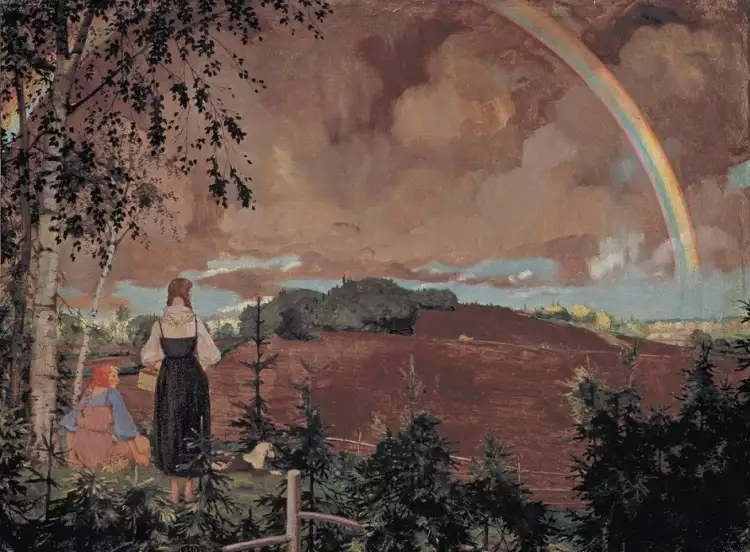 Modern. Konstantin Somov. Rainbow, 1897
Modern. Konstantin Somov. Rainbow, 1897
Currently, the Art Nouveau style is in demand primarily in design and interior decoration. The works of masters are presented in the catalogs of online auctions on the Very Important Lot platform, where authors sell their works directly to collectors.
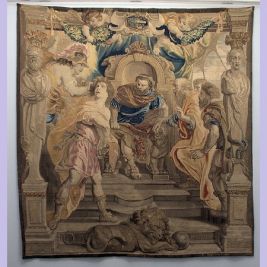 Tapestry - an exquisite handmade carpet with an ancient history
Tapestry - an exquisite handmade carpet with an ancient history 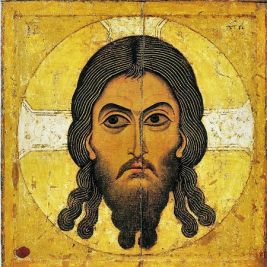 The Art of Ancient Russia is a unique blend of pagan traditions of Eastern Slavs and Byzantine influence on the local culture
The Art of Ancient Russia is a unique blend of pagan traditions of Eastern Slavs and Byzantine influence on the local culture 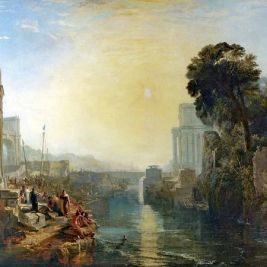 The painting "Dido building Carthage" by William Turner is the artist's beloved creation, which he wanted to take with him to his grave
The painting "Dido building Carthage" by William Turner is the artist's beloved creation, which he wanted to take with him to his grave 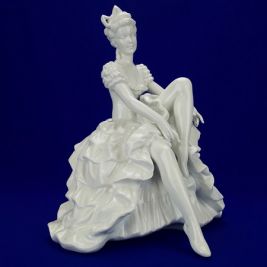 Wallendorfer Porcelain Manufactory - a manufacturer with a 250-year history
Wallendorfer Porcelain Manufactory - a manufacturer with a 250-year history 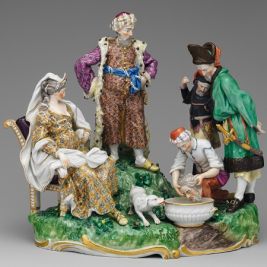 Frankenthal Porcelain: a rarity worthy of museum collections
Frankenthal Porcelain: a rarity worthy of museum collections 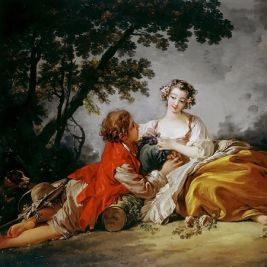 Rococo: Peasant Idylls of Court Painters
Rococo: Peasant Idylls of Court Painters 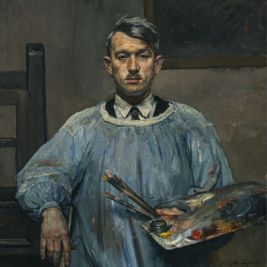 A colourful farmer Thomas Baumgartner
A colourful farmer Thomas Baumgartner 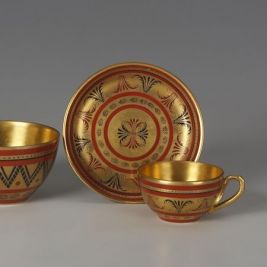 Kuznetsov porcelain
Kuznetsov porcelain  Edward Munch—the creator of nightmares and the singer of anxiety
Edward Munch—the creator of nightmares and the singer of anxiety 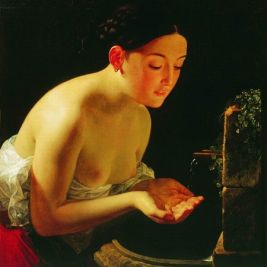 Reproduction is an accurate copy of a work of art: its essence, distinctive features, and merits
Reproduction is an accurate copy of a work of art: its essence, distinctive features, and merits